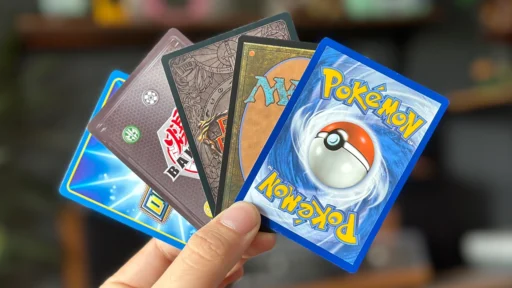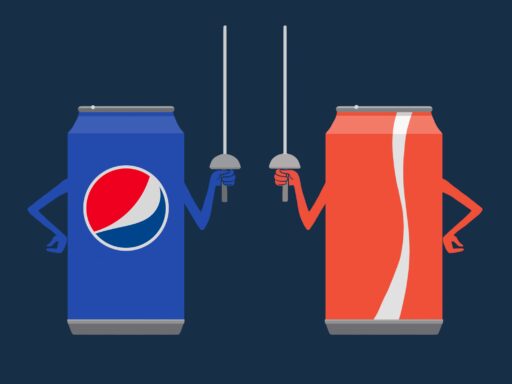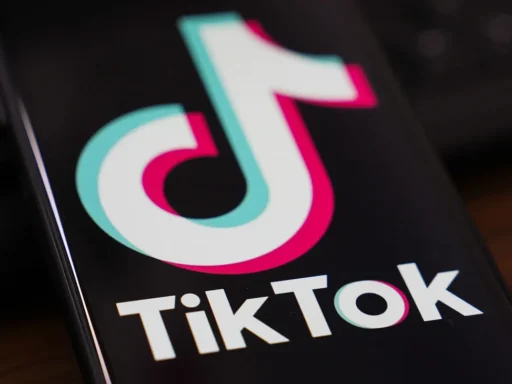For decades, Trading Card Games (TCGs) have captivated players worldwide, merging strategic gameplay with the thrill of collecting beautifully designed cards. These games, often involving deep-rooted lore and gameplay mechanics, offer casual and competitive environments for players to test their skills, strategize, and create. Since their inception, TCGs have evolved from niche beginnings to multifaceted hobbies that appeal to a diverse audience, spanning all ages and backgrounds. All over the world, players and fans gather together for conventions, competitions, and exhibitions to play and compete. Among the latest entrants into this vibrant world is Disney Lorcana by Ravensburger NA, a game that combines the timeless allure of Disney characters and stories with the strategic depth of card gaming.
What is Disney Lorcana?
Created in collaboration by Ravensburger NA and Disney, Lorcana is designed to appeal to a broad audience, from young Disney fans to avid TCG enthusiasts. At its core, Disney Lorcana allows players to step into the shoes of “Illumineers,” tasked with exploring Disney’s universe to protect the “Great Illuminary.”
The game’s mechanics are built around the concept of deck-building, where players construct decks from a pool of cards sold in starter decks and blind packs. Each card represents characters, items, and songs from Disney’s extensive catalogue, offering a unique two-color system that influences deck-building strategies and gameplay dynamics.
The Cost of Entering the Magic
Disney Lorcana has been mindful of accessibility in terms of cost, providing various entry points for enthusiasts. The initial set, “The First Chapter,” introduced Starter Decks, Booster Packs, a Gift Set, and the Illumineer’s Trove, with Manufacturer’s Suggested Retail Prices (MSRP) ensuring affordability while hinting at the collectible nature of the game.
Pricing for “Into the Inklands,” the latest expansion in 2024, follows suit with Starter Decks priced at $16.99 USD, Booster Packs at $5.99 USD, and additional collectibles like the Illumineers Trove at $49.99 USD.
The 2024 Roadmap: Expanding the Universe
Disney Lorcana’s release schedule for 2024 promises an expanding universe that keeps the community engaged and the gameplay fresh. With its release in March, “Into the Inklands” sets the tone for the following three expansions planned for the year. This steady stream of content ensures that Disney Lorcana remains dynamic, with players eagerly anticipating new additions to their collections while maintaining a model for quarterly financial investment from players.
The Financial Aspect of Being a Disney Lorcana Player
The Trading Card Game hobby is an exciting journey, but it comes with its own set of financial considerations. For enthusiasts of games like Disney Lorcana, understanding the cost of participation is essential to fully enjoying the game without breaking the bank. Here, we break down the costs associated with being a Disney Lorcana player, exploring the initial investment and ongoing expenses to give prospective players a clear picture of what to expect.
Initial Investments into Trading Card Games
The journey into Disney Lorcana starts with acquiring a Starter Deck. Priced at $16.99 USD, the Starter Deck offers a pre-built deck that allows new players to jump straight into gameplay. These decks are balanced to be playable in environments against each other, meaning players that each have starter decks can enjoy the gameplay and equally have favorable odds to win. For many, this initial investment is the first step into the larger world of Lorcana.
However, the true nature of TCGs lies in customization and strategy, compelling players to expand their card collections. Booster Packs, usually priced at $5.99 USD each, offer the chance to discover new cards, enhancing one’s deck with unique characters and abilities. For those looking to dive deeper, the Illumineer’s Trove and Gift Sets provide a more substantial expansion, usually priced at $49.99 USD and $29.99 USD, respectively.
Ongoing Expenses
TCG players understand that building a competitive deck or a complete collection is not a one-time purchase. Regular releases of expansions, such as “Into the Inklands,” ensure the game stays fresh but also represent recurring costs. Players might find themselves purchasing several Booster Packs or additional Starter Decks from new sets to stay current.
Beyond expansions, players often invest in accessories to protect and organize their collections. Card Sleeves, Deck Boxes, Card Portfolios, and Playmats are a way to express one’s passion for the game. These accessories range from $5.99 USD for a Deck Box to $19.99 USD for Playmats and Card Portfolios, adding to the overall investment in the hobby.
Budgeting for the Hobby
The cost of being a Disney Lorcana player can vary widely based on individual goals. Casual players may find satisfaction with a Starter Deck and occasional Booster Packs, keeping expenses minimal. Those aiming to compete or complete their collections will face higher costs, potentially investing hundreds of dollars into the game.
Strategic purchases, such as focusing on specific expansions or trading with other players, can mitigate costs. Additionally, setting a monthly or quarterly budget for TCG expenses can help manage the financial aspect of the hobby without diminishing the enjoyment.
The Cost of Competitive Play in TCGs: An Analysis Using Disney Lorcana
The financial aspect to TCGs play a significant role, especially for players aiming to stay relevant in the competitive scene. Given the release schedule of Disney Lorcana, with expansions planned quarterly throughout the year, players need to adapt their decks to include new strategies and counter those of their opponents.
Quarterly Expenses Breakdown
An average competitive player’s quarterly expenses can be divided into several key areas:
- New Expansions: With Disney Lorcana releasing new expansions roughly every quarter, a competitive player will likely purchase multiple Booster Packs or boxes at the launch of each expansion to quickly acquire new, relevant cards. If a new expansion box (including Booster Packs) averages around $100-$150, this becomes a baseline quarterly expense.
- Secondary Market: To acquire specific cards needed to optimize their decks, players often turn to the secondary market. Depending on the rarity and demand for specific cards, a player could spend anywhere from $50 to several hundred dollars quarterly to obtain these crucial deck components.
- Tournament Entry Fees: Competitive players frequently participate in tournaments to test their decks, refine their strategies, and qualify for higher levels of competition. Entry fees vary widely but can range from $10 to $50 for local or regional tournaments. Assuming participation in one to two tournaments a month, this could add an additional $20-$100 to quarterly expenses.
- Accessories and Upkeep: Protective sleeves, deck boxes, and playmats are essential for preserving the condition of valuable cards and ensuring a smooth play experience. While not a regular expense, budgeting $20-$50 quarterly for replacements or upgrades is reasonable.
Realistic Quarterly Budget for a Competitive Player
Combining these expenses, a competitive Disney Lorcana player might expect to spend approximately $200-$400 quarterly to stay competitive. This estimate can vary based on the player’s success in trading, the specific needs of their deck, and the frequency of tournament participation.
It’s also worth noting that strategic decisions, such as which cards to chase and the timing of purchases, can significantly impact overall expenses. Players adept at trading and market analysis may reduce their costs by buying low and selling high or trading for needed cards directly.
The Allure of Mystery: Gambling Aspects in Trading Card Games
The concept of mystery boxes, or the random distribution of goods where the contents are unknown until opened, finds a prominent place in the world of Trading Card Games (TCG) like Disney Lorcana. This aspect of TCGs is both a draw for players and a point of contention, intertwining the excitement of the unknown with the mechanisms of gambling.
The Thrill of the Unknown
At the heart of the appeal for many TCG players is the thrill of opening Booster Packs. Each pack, much like a mystery box, holds the promise of rare or highly sought-after cards, but also the risk of obtaining duplicates or less desirable cards. This gamble on the unknown is a significant part of the hobby’s excitement, encouraging players to continuously engage with the game in hopes of enhancing their collections at a consistent financial investment.
The Economic Dynamics of TCGs
This randomness introduces an economic dynamic akin to gambling. Players invest in Booster Packs or other random assortments of cards with the hope of obtaining greater value than the purchase price. The secondary market for TCGs, where individual cards can be sold or traded, further accentuates this gambling aspect, with the value of cards fluctuating based on demand, rarity, and gameplay utility.
The allure of potentially striking it rich by finding a rare card drives not only sales of Booster Packs but also forms a speculative market around the cards themselves. This creates a situation where some players spend significant amounts of money chasing rare cards, akin to participants in other forms of gambling hoping for a big win.
Ethical Considerations: Can Children Gamble?
The gambling-like nature of TCGs raises ethical considerations, particularly regarding their appeal to younger audiences. Disney and Disney products are typically intended for a target audience of children. The excitement of opening packs and the chance to obtain something valuable can be particularly enticing to children, who may not fully grasp the value of money or the odds of obtaining rare cards. This has led to discussions within the community and among regulators about the need for guidance, transparency in odds, and parental oversight.
Controversy of Mystery Boxes: From TCGs to Star Wars Battlefront 2
The intersection of trading card games (TCGs) and the concept of mystery box gambling brings to the forefront a broader discussion about randomized rewards in entertainment media. A pertinent case study that highlights the potential issues with this model is the controversy surrounding EA’s Star Wars Battlefront 2, a video game that faced significant backlash and legal scrutiny over its use of loot boxes—a digital form of mystery boxes.
Star Wars Battlefront 2: A Case Study in Controversy
When Star Wars Battlefront 2 was released, it included a loot box system that allowed players to purchase with real money the chance to obtain in-game items and characters. This system was criticized for encouraging a pay-to-win model, where players could gain significant advantages in multiplayer games by spending money on loot boxes, rather than earning rewards through gameplay. The randomness of loot box contents, coupled with their impact on game progression, led to widespread accusations of the game promoting gambling-like behavior, especially among children.
TCGs and the Physical Mystery Box Model
The controversy surrounding Star Wars Battlefront 2 and TCGs share common ground in the use of randomized rewards. In both models, players spend money without a guarantee of what they will receive, with the hope of obtaining something valuable or beneficial to their collection or gameplay. However, there are key differences in how these models impact player experience and perception.
TCGs have a tangible aspect to their mystery boxes—physical cards can be collected, traded, or sold independently of the game itself. This physicality offers a different kind of value and enjoyment, where the act of collecting, trading, and displaying cards becomes a significant part of the hobby. Moreover, TCGs typically do not require these random purchases to enjoy the basic game, allowing players to participate without engaging in the randomized aspect of card acquisition.
Legislative Response and Industry Implications
The backlash against Star Wars Battlefront 2’s loot box system led to legislative inquiries in several countries, with lawmakers questioning the ethical implications of loot boxes and their resemblance to gambling. Some countries, like Belgium, moved to regulate or ban loot boxes in video games, especially those accessible to children, leading to a broader industry-wide reevaluation of the use of randomized rewards.
Moving Forward: Ethics and Transparency
The key takeaway from the comparison between TCGs and digital games like Star Wars Battlefront 2 lies in the approach to randomized rewards and the importance of transparency and ethical considerations. For TCGs, providing clear information about odds, ensuring that gameplay enjoyment isn’t contingent on purchasing randomized packs, and fostering a healthy secondary market can mitigate concerns related to gambling. For video games, moving away from pay-to-win models and ensuring that any form of randomized rewards are implemented ethically and transparently can help avoid backlash and regulatory scrutiny.
Conclusion: The Complex Demographics of Trading Card Games
The exploration of Disney Lorcana’s gameplay mechanics, lore, pricing strategy, and the costs associated with competitive play sheds light on a multifaceted issue within the world of Trading Card Games (TCGs): the demographic target, particularly the feasibility of children as the primary audience. While TCGs, including Disney Lorcana, undoubtedly appeal to younger audiences with their engaging themes, collectible nature, and connections to beloved franchises, a deeper analysis reveals complexities that challenge the notion of children being the sole or even primary demographic.
Financial Considerations
The financial aspect of maintaining competitiveness in TCGs, as illustrated through the detailed breakdown of quarterly expenses for competitive play, underscores a significant barrier for children as the main demographic. The costs associated with staying relevant—ranging from acquiring new expansions and specific cards from the secondary market to tournament entry fees and accessory upkeep—can quickly accumulate. These expenses, often totaling hundreds of dollars quarterly, are beyond the means of most children without substantial financial support from guardians or family members.
Strategic Depth and Community Engagement
TCGs require a deep understanding of game mechanics, strategy formulation, and continuous learning to adapt to evolving metagames. Competitive play, in particular, demands a level of analytical thinking, planning, and social interaction that typically surpasses the capabilities of very young players. The communities that form around TCGs often include a broad spectrum of ages, with older players contributing significantly to the strategic and competitive layers of the game.
Ethical and Regulatory Considerations
The introduction of randomized rewards and the parallels drawn to gambling-like mechanisms, especially in the context of digital loot boxes and their legislative scrutiny, further complicate the targeting of children as the primary demographic for TCGs. Ethical considerations and potential regulatory implications necessitate a cautious approach to marketing and selling these games to children, highlighting the need for parental guidance and oversight.
A Diverse Target Audience
It becomes evident that TCGs, in their current form and complexity, are designed to cater to a diverse audience rather than being exclusively targeted at children. The financial, intellectual, and social aspects of these games suggest a demographic that includes older players capable of navigating the competitive landscape, understanding the value of cards, and participating in the community on a deeper level. While children are undoubtedly part of the audience, the detailed examination of the game’s facets—from cost to competitive play—demonstrates that TCGs are crafted with a broader demographic in mind.
We discussed this and more on our YouTube Channel here:









